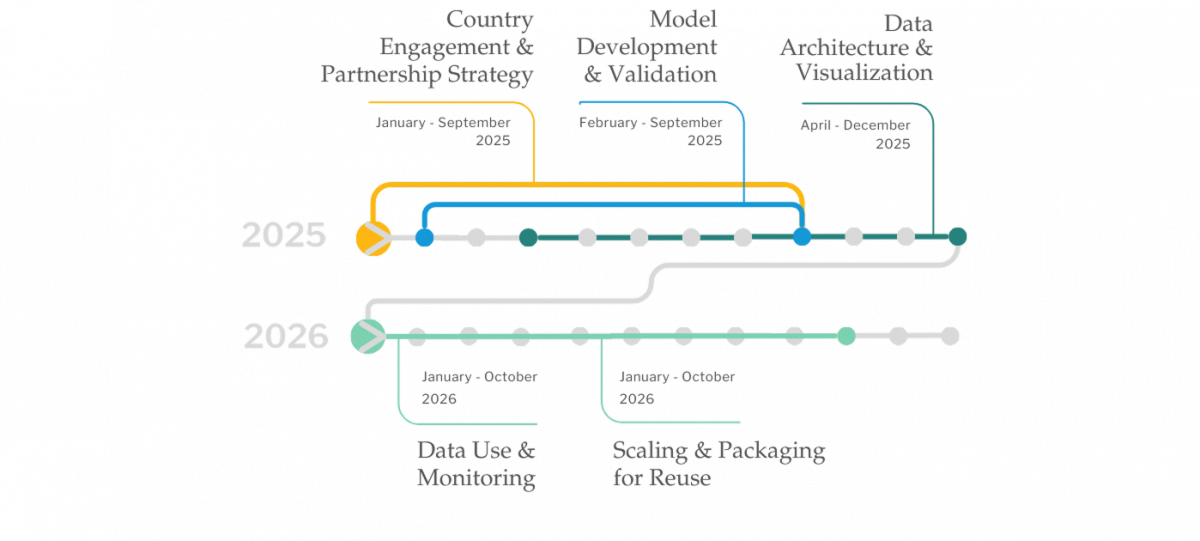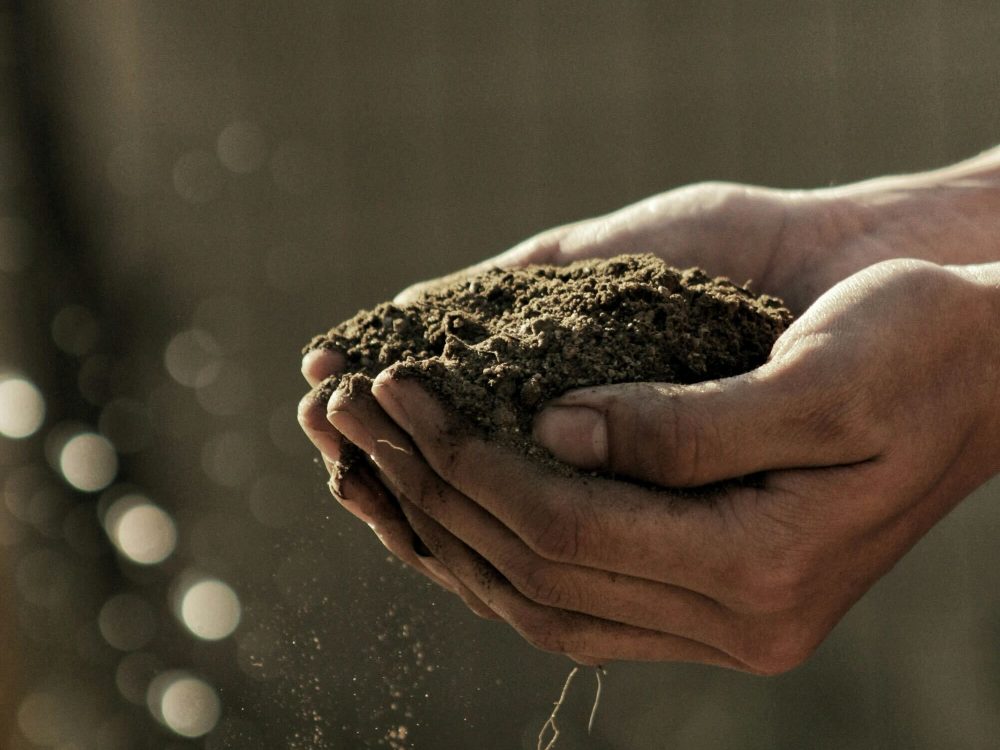The Soil Nutrient Roadmap
With roughly 65% of the world’s remaining uncultivated arable land, Africa holds immense promise for agricultural growth. Yet degrading soil health and fragmented data systems are preventing effective action from being taken. According to the African Union (AU), about 75-80% of the continent’s cultivated land is degraded, with a loss of 30 to 60 kg of nutrients per hectare per year (a loss of USD $4 billion per year).
To address these challenges, the Soil Nutrient Roadmap (SNR), a first-of-its-kind data science-driven program led by Development Gateway: An IREX Venture, with support from the Gates Foundation, aims to use data and modeling to address these challenges, informing country soil health strategies and investment plans in West and East Africa.
Launched in 2025, the SNR program is a 24-month initiative designed to equip African countries with the data, digital tools, and interoperable systems needed to diagnose soil nutrient challenges, co-design targeted solutions, and develop actionable roadmaps. Through its three-phase approach – (i) identifying nutrient gaps, (ii) designing tailored solutions, and (iii) supporting implementation planning – the program supports Ministries of Agriculture (MoAs), Agricultural Research Institutes, and the private sector to identify critical constraints to improved soil nutrition, crop production, and farmer income, specifically in the target countries of Ethiopia, Ghana, Kenya, and Tanzania.
SNR avoids “complex models.” Instead, it uses a simple, transparent, stakeholder-driven methodology built on trusted datasets:
- The Spatial Production Allocation Model (SPAM) for crop distribution
- Innovative Solutions for Decision Agriculture (iSDA) for soil and agronomy data
- The Global Yield Gap Atlas (GYGA) for yield gap analysis
This ensures results are understandable, replicable, and co-owned by national stakeholders.
Who benefits from SNR’s approach?
- For Ministers: Clear targets, costed budgets, sequenced actions
- For Donors: Evidence of return on investment, scalable interventions
- For Private Sector: Market sizing, demand forecasts, investment signals
Through leveraging international and local data sources, as well as aligning with the African Union (AU)’s ten-year soil health roadmap, SNR helps drive the development of effective, evidence-based soil health investment plans that respond to both local community needs and regional requirements.
The Nairobi Declaration & SNR’s Role in Regenerating Africa’s Soil
- In May 2024, African Union Heads of State and Governments signed the Nairobi Declaration on Fertilizer and Soil Health, a ten-year roadmap to restore Africa’s degraded soils. This ten-year action plan aims to:
- Restore 30% of degraded soils by 2034
- Triple domestic fertilizer production and distribution by 2034
- Ensure 70% of smallholders have access to tailored recommendations
However, the lack of a comprehensive data framework for evidence-based national action plans and investment strategies remains a significant challenge to achieving these goals. This provides SNR with a crucial opportunity to support the Nairobi Declaration and, through leveraging digital solutions and data-driven decision-making, inform national soil health strategies.
By equipping governments and stakeholders with localized diagnostics, actionable strategies, and digital solutions, SNR supports the development of resilient, evidence-based, and nutrition-sensitive soil health strategies that improve productivity while ensuring sustainability.
SNR’s Three-Step Journey

To accomplish this, SNR follows a structured, three-step journey. Each of the steps delivers evidence-based data, digital tools and solutions, and implementation strategies that enable governments and stakeholders to take informed, localized action toward building sustainable soil health systems.
Phase 1 – Diagnostic: Set the Baseline
SNR’s first phase focuses on developing a country-specific diagnostic tool that maps out crop nutrient cycles and identifies critical soil nutrient gaps in order to assess yield potential under various scenarios. By integrating data with crop production scenarios and climate considerations, the diagnostic tool and accompanying dashboard enable governments to set realistic ambition levels and identify plant nutrition gaps with greater precision.
Key Deliverables:
- 2-page cabinet brief with ambition scenarios
- Nutrient gap maps and charts at national and regional levels
- Interactive dashboard with policy-ready visualizations
- Baseline indicators on yields, fertilizer use, and self-sufficiency
Phase 2 – Solution Design: Design the Levers
Building on the diagnostic findings, the second phase focuses on designing solutions tailored to each country’s specific needs. The aim of this phase is to model the impact of key interventions, such as fertilizer blends, liming, and targeted/specific land use interventions. Using simulation models allows the SNR team to assess the technical feasibility, financial requirements, and potential ROI. It also illustrates potential drawbacks of each solution while highlighting supporting interventions – such as regulatory frameworks, financial mechanisms, infrastructure improvements, and capacity building – that may be required.
Key Deliverables:
- Costed options for key levers such as blends, liming, and nutrition use efficiency (NUE) practices
- ROI analysis for each solution
- Draft policy and financing mechanisms
- Technical briefs for private sector opportunities
Phase 3 – Roadmap Development: Build the Plan
The final phase of SNR consolidates the diagnostic insights and solution design findings, translating them into sequenced investment pathways and policy recommendations, forming country-specific implementation plans. This will be presented in an integrated and sequenced roadmap, along with funding requirements and financial trajectories. To ensure long-term impact and viability across different regions, as well as to chart a path toward localization of the concept, SNR will also investigate partnership models and sustainability options for consideration as it continues to develop and grow.
Key Deliverables:
- Sequenced national investment roadmap
- Fertilizer import budget and domestic production needs
- Monitoring Key Performance Indicators (KPIs) and a dashboard for tracking targets
- Governance and coordination framework
Components and Timeline
The program is structured around five components, as detailed below.

SNR is delivered by Development Gateway: An IREX Venture, with technical leadership from iSDA, GYGA, and FAO. Soil degradation statistics are based on AU, FAO, and technical partner data (2024).
Request a country briefing and join the Technical Partners Group by contacting Seember Ali at sali@developmentgateway.org
Related Posts

Unlocking Africa’s Agricultural Potential: Introducing the Soil Nutrient Roadmap
For over a decade, Development Gateway: An IREX Venture (DG) has been at the forefront of digital agriculture, leveraging agricultural data to support input monitoring, value chain analysis, and farmer-centric governance models. With funding from the Gates Foundation, DG is launching the Soil Nutrient Roadmap (SNR), a cutting-edge initiative using geospatial data to estimate current and future soil and crop nutrient requirements.